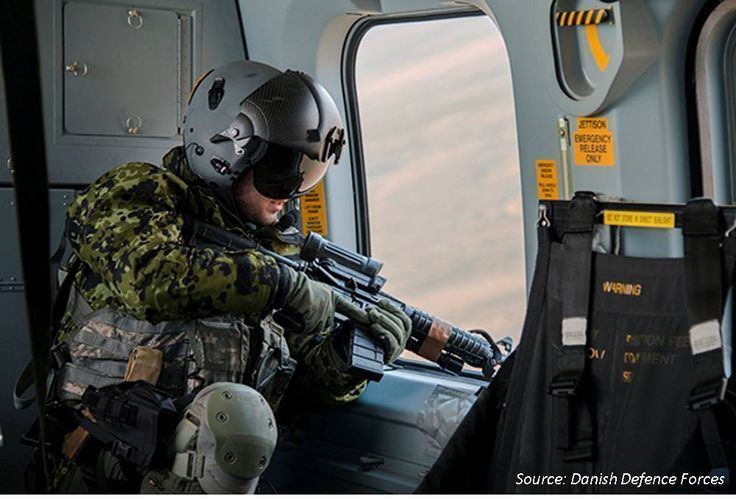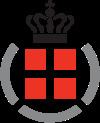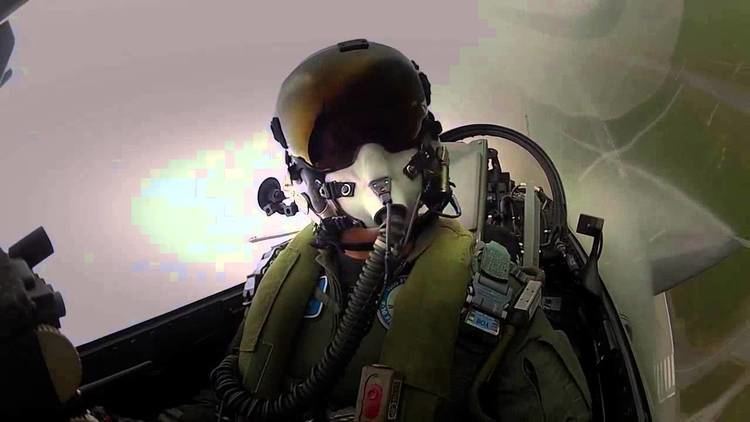Headquarters Kuglegården Prime Minister Lars Løkke Rasmussen Commander in chief Margrethe II of Denmark Military age 18 | Monarch Margrethe II Date founded 1949 Minister of defense Claus Hjort Frederiksen | |
 | ||
Current form Defence Agreement 2013-17 Website Official WebsiteOfficial FacebookOfficial Picture Database Motto Fordi noget er værd at kæmpe for! (Because some things are worth fighting for!) Similar Royal Danish Army, Royal Danish Navy, Royal Danish Air Force, Swedish Armed Forces, International Security Assistanc | ||
The Danish Defence (Danish: Forsvaret) is the unified armed forces of the Kingdom of Denmark, charged with the defence of Denmark and its constituent, self-governing nations Greenland and the Faroe Islands.
Contents
- The army is playing with forces danish defence
- History
- Total defence
- Purpose and task
- Defence budget
- Expenditures
- Branches
- Structure
- Special forces
- Operations
- NATO
- UN
- National Missions
- Coalitions
- Conscription
- References

The Queen is the Commander-in-chief in accordance with the Danish constitution, and under the Danish Defence Law the Minister of Defence serves as the commander of the Danish Defence (through the Chief of Defence and the Defence Command) and the Danish Home Guard (through the Home Guard Command). De facto the Danish Cabinet is the commanding authority of the Defence, though it cannot mobilize the armed forces, for purposes that are not strictly defence oriented, without the consent of parliament.

Denmark also has a concept of "total defence" (Danish: Totalforsvar).
The army is playing with forces danish defence
History
During World War II, the armed forces were disbanded by the Germans during Operation Safari. After the war, the different branches were reorganized, and collected under Danish Defence, was in order for greater communication between the branches.
Total defence

Total Defence (Danish: Totalforsvaret), is a collection of the military, Home Guard, Danish Emergency Management Agency and elements of the police to ensure effective and coordinated efforts, in cases of crises, disasters or major incidents.
Purpose and task

The purpose and task of the armed forces of Denmark is defined in Law no. 122 of February 27, 2001 and in force since March 1, 2001. It defines three purposes and six tasks.
Its primary purpose is to prevent conflicts and war, preserve the sovereignty of Denmark, secure the continuing existence and integrity of the independent Kingdom of Denmark and further a peaceful development in the world with respect to human rights.
Its primary tasks are: NATO participation in accordance with the strategy of the alliance, detect and repel any sovereignty violation of Danish territory (including Greenland and the Faroe Islands), defence cooperation with non-NATO members, especially Central and East European countries, international missions in the area of conflict prevention, crises-control, humanitarian, peacemaking, peacekeeping, participation in Total Defence in cooperation with civilian resources and finally maintenance of a sizable force to execute these tasks at all times.
Defence budget
Since 1988, Danish defence budgets and security policy have been set by multi-year agreements supported by a wide parliamentary majority including government and opposition parties. However, public opposition to increases in defence spending—during a period when economic constraints require reduced spending for social welfare—has created differences among the political parties regarding a broadly acceptable level of new defence expenditure.
The latest Defence agreement ("Defence agreement 2005–2009") was signed June 10, 2004, and calls for a significant re-construction of the entire military. From now about 60% support structure and 40% combat operational capability, it is to be 40% support structure and 60% combat operational capability, i.e. more combat soldiers and fewer "paper"-soldiers. The reaction speed is increased, with an entire brigade on standby readiness; the military retains the capability to continually deploy 2,000 soldiers in international service or 5,000 over a short time span. The standard mandatory conscription is modified. Generally this means fewer conscripts, less service time for them and only those who choose so, will continue into the reaction force system.
Expenditures
In 2006 the Danish military budget was the fifth largest single portion of the Danish Government's total budget, significantly less than that of the Ministry of Social Affairs (~110 billion DKK), Ministry of Employment (~67 billion DKK), Ministry of the Interior and Health (~66 billion DKK) and Ministry of Education (~30 billion DKK) and only slightly larger than that of the Ministry of Science, Technology and Innovation (~14 billion DKK). This list lists the complete expenditures for the Danish Ministry of Defence.
The Danish Defence Force, counting all branches and all departments, itself has an income equal to about 1–5% of its expenditures, depending on the year. They are not deducted in this listing.
Approximately 95% of the budget goes directly to running the Danish military including the Home guard. Depending on year, 50–53% accounts for payment to personnel, roughly 14–21% on acquiring new material, 2–8% for larger ships, building projects or infrastructure and about 24–27% on other items, including purchasing of goods, renting, maintenance, services and taxes.
The remaining 5% is special expenditures to NATO, branch shared expenditures, special services and civil structures, here in including running the Danish Maritime Safety Administration, Danish national rescue preparedness and the Administration of Conscientious Objectors (Militærnægteradministrationen).
Because Denmark has a small and highly specialized military industry, the vast majority of the Danish Defence's equipment is imported from NATO and the Nordic countries.
Branches
Structure
Special forces
Operations
Current deployment of Danish forces, since 10-03-2016:
NATO
UN
National Missions
Coalitions
Conscription
Technically all Danish 18-year-old males are conscripts (37,897 in 2010, of whom 53% were considered suitable for duty). Due to the large number of volunteers, 96-99% of the number required in the past three years, the number of men actually called up is relatively low (4200 in 2012). There were additionally 567 female volunteers in 2010, who pass training on "conscript-like" conditions.
Conscripts in the Danish Defence (army, navy and air force) generally serve four months, except:
There has been a right of conscientious objection since 1917.
